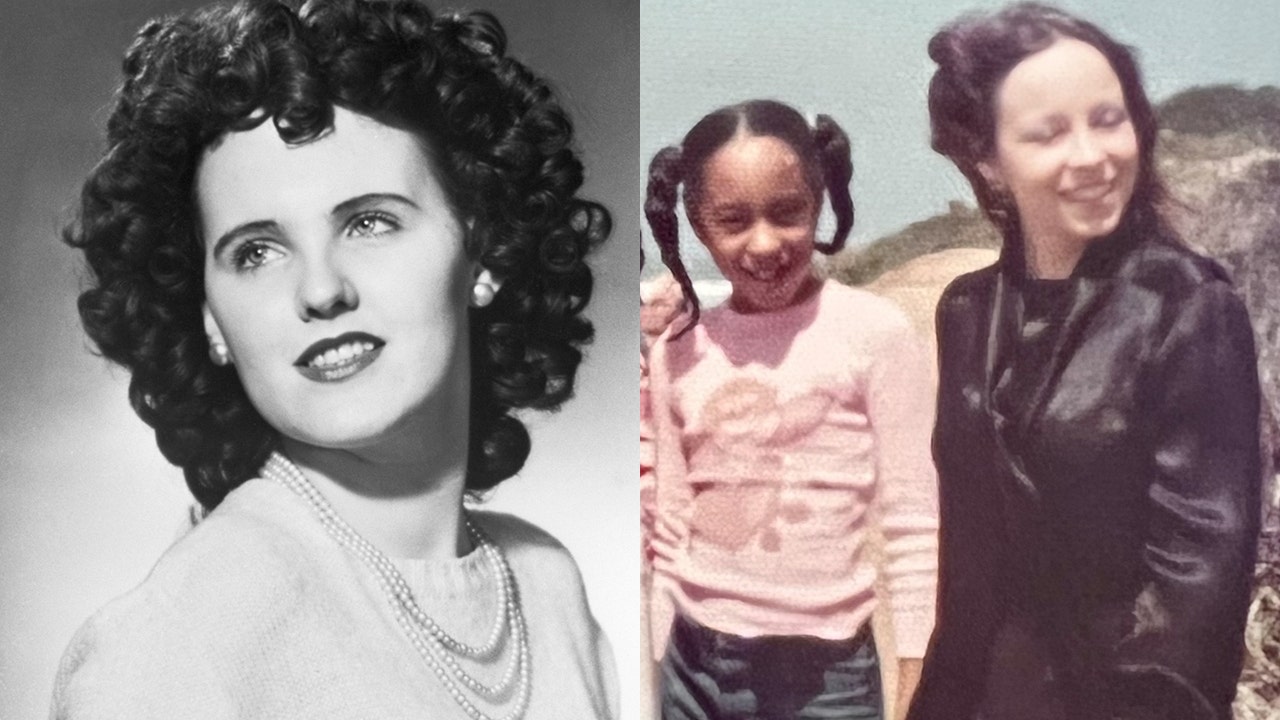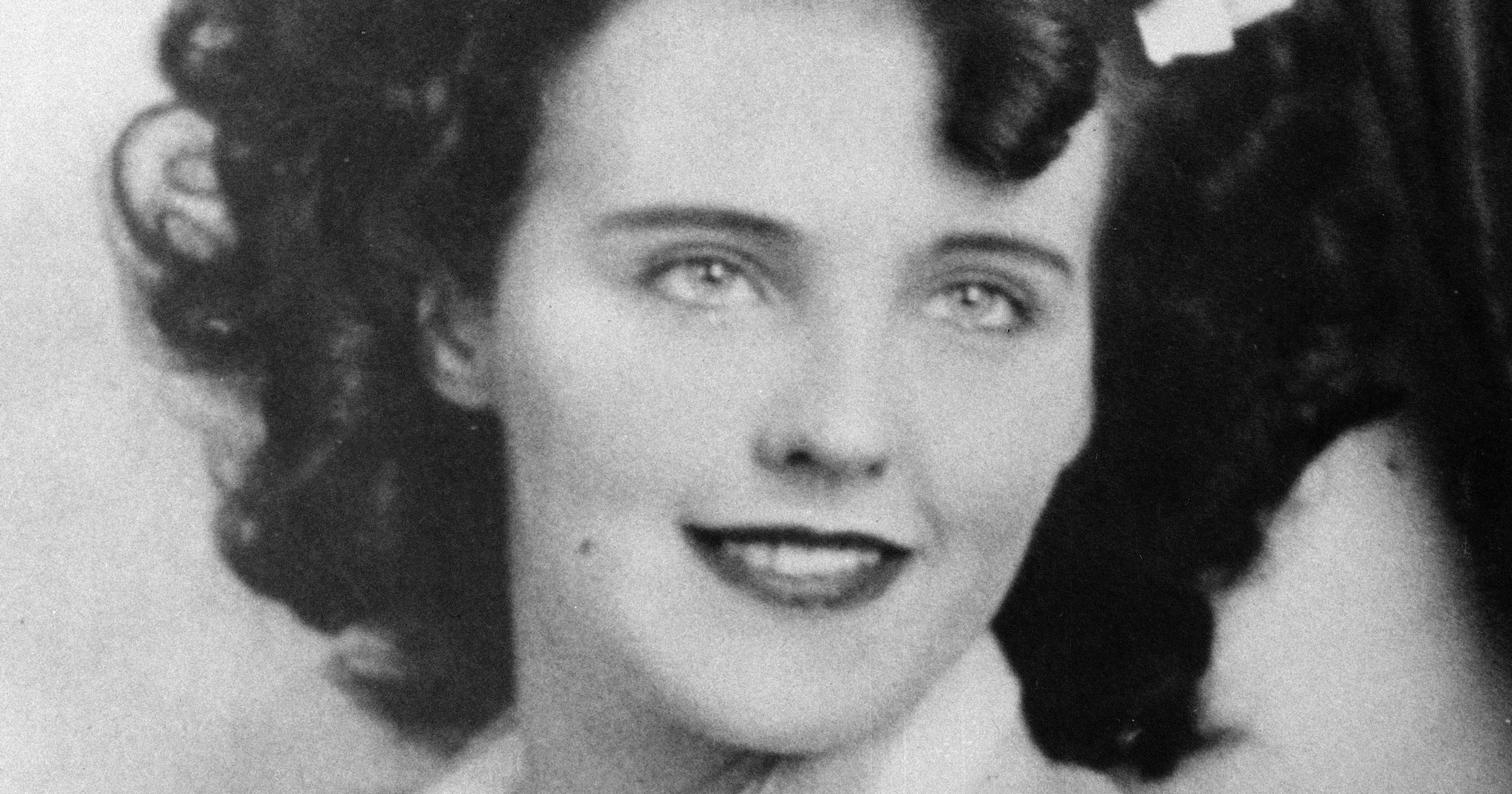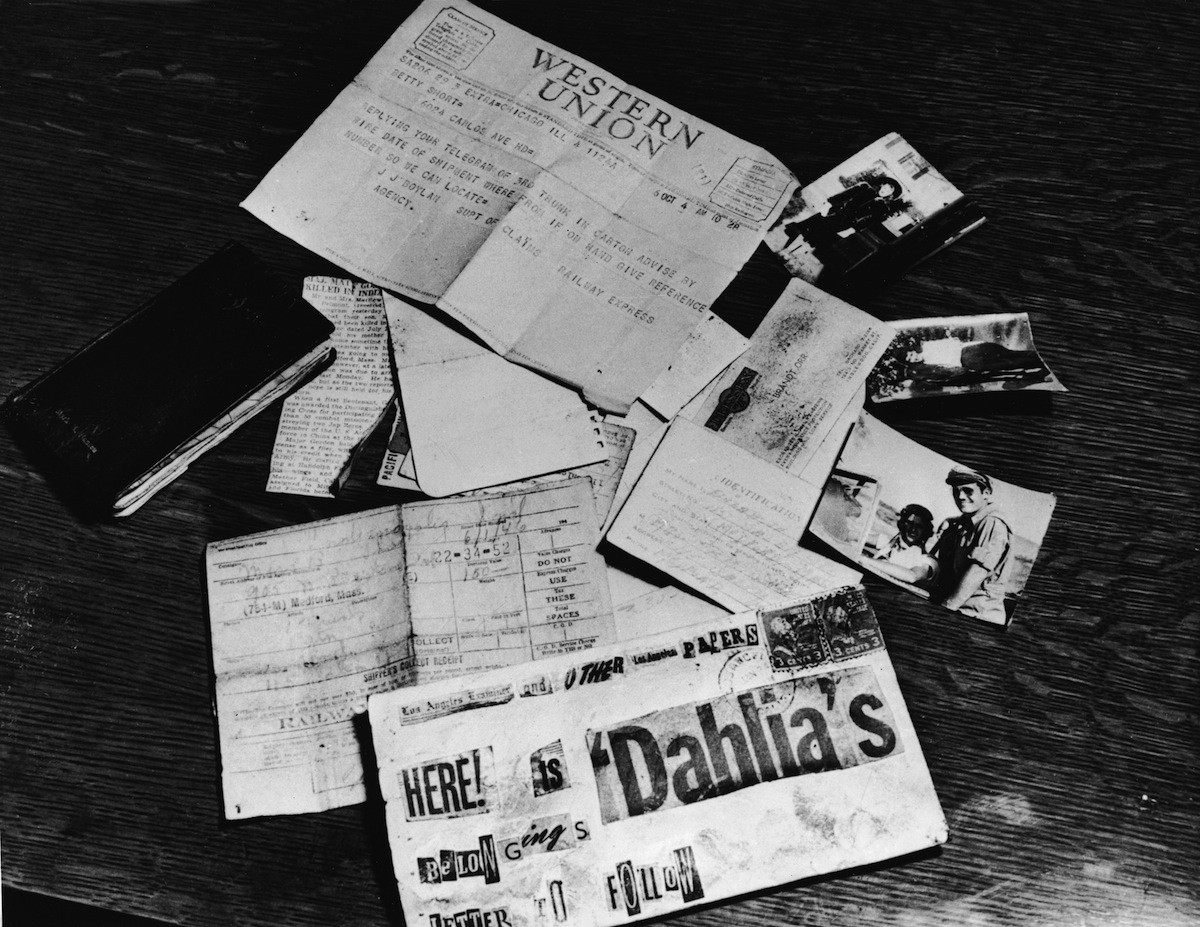The Enigma Of The Black Dahlia: A Deep Dive Into One Of America's Most Infamous Unsolved Murders
The Black Dahlia murder case remains a haunting and enigmatic chapter in American history, captivating the public for over seven decades. This chilling case, marked by its brutal nature and mysterious circumstances, centers around the tragic death of Elizabeth Short. The crime scene photos associated with the Black Dahlia murder have become an indelible part of the case's legacy, offering a grim yet invaluable window into the crime's severity and complexity.
Elizabeth Short, affectionately dubbed the "Black Dahlia" due to her striking beauty and preference for dark clothing, was discovered brutally murdered on January 15, 1947, in a desolate lot in Los Angeles. The crime scene photos, which were widely disseminated in the media at the time, played a pivotal role in shaping public discourse about the case. Despite their graphic nature, these images have provided essential clues for investigators, leaving a lasting impact on the pursuit of justice.
As we delve deeper into the Black Dahlia murder case, it is imperative to explore the historical backdrop, the significance of the crime scene photos, and the enduring enigma that surrounds this harrowing event. This article aims to dissect the case's origins, the forensic evidence, and the profound influence of the photos on both the investigation and public consciousness.
- The Unsolved Mystery Of Brittnee Dancho A Search For Answers
- Ludwigs Height A Comprehensive Exploration Of The Iconic Figure
Table of Contents
- Introduction to the Black Dahlia Murder
- Biography of Elizabeth Short
- Crime Scene Details
- Analysis of Crime Scene Photos
- Investigation Process
- Suspects and Theories
- Media's Role in the Case
- Public Reaction and Legacy
- Psychological Insights into the Murder
- Conclusion
Introduction to the Black Dahlia Murder
Understanding the Historical Context
The Black Dahlia murder unfolded during a transformative period in post-war America, a time when crime rates were escalating. The murder of Elizabeth Short, a young woman with dreams of becoming a Hollywood starlet, sent shockwaves through the nation. The case quickly became a media sensation, with the crime scene photos capturing widespread attention and sparking both fascination and fear. These images not only highlighted the brutality of the crime but also underscored the societal challenges of the era.
Why the Case Remains Unsolved
Despite extensive investigations and numerous leads, the Black Dahlia murder remains unresolved to this day. Factors such as the absence of advanced forensic technology, the loss of critical evidence, and an overwhelming influx of false confessions hindered the pursuit of justice. However, the crime scene photos have continued to provide valuable insights, captivating criminologists and true crime enthusiasts alike with their haunting details.
Biography of Elizabeth Short
To fully grasp the gravity of the Black Dahlia murder, it is essential to understand the life of Elizabeth Short. Born on July 29, 1924, in Boston, Massachusetts, Short led a life marked by instability and strained relationships. Her aspirations of achieving stardom brought her to Los Angeles, where her dreams were tragically cut short. Her story is one of ambition, resilience, and ultimately, a tragic end.
- Understanding Jelly Leaks A Comprehensive Guide To Their Impact And Prevention
- Discover The Creative World Of Talissa Smalley On Onlyfans
| Full Name | Elizabeth Short |
|---|---|
| Nickname | Black Dahlia |
| Date of Birth | July 29, 1924 |
| Date of Death | January 15, 1947 |
| Place of Birth | Boston, Massachusetts |
| Occupation | Aspiring Actress |
Crime Scene Details
Location of the Crime
Elizabeth Short's body was discovered in a vacant lot situated at 3900 South Norton Avenue in Los Angeles. The remote location likely afforded the perpetrator ample opportunity to commit the crime without immediate detection. The crime scene photos reveal the chilling manner in which Short's body was posed, suggesting a level of calculated planning by the killer.
Key Evidence Found at the Scene
- Short's body was found severed at the waist, with her face and body grotesquely mutilated.
- Her hands were bound above her head, indicating either a struggle or a ritualistic act.
- Clues such as tire tracks and a cement sack were discovered nearby, potentially offering insights into the killer's methods of transporting the body.
Analysis of Crime Scene Photos
The Role of Photography in Forensic Investigation
The Black Dahlia murder crime scene photos are among the most infamous in forensic history. These images not only document the crime but also serve as critical evidence in understanding the killer's methods. The photos reveal the extent of the injuries inflicted on Short, as well as the precise positioning of her body, leading to various theories regarding the killer's psychological profile.
What the Photos Reveal About the Killer
Experts have meticulously analyzed the crime scene photos to deduce the killer's behavioral patterns. The deliberate arrangement of Short's body suggests a methodical approach, while the severity of the mutilations points to profound psychological disturbance. The photos have been instrumental in debunking false leads and narrowing down potential suspects, offering a rare glimpse into the mind of a killer.
Investigation Process
Initial Steps by Law Enforcement
Upon discovering Short's body, the Los Angeles Police Department initiated an extensive investigation. Detectives interviewed hundreds of individuals, including Short's acquaintances and potential witnesses. The crime scene photos were widely distributed in the media, hoping to elicit tips from the public. However, the overwhelming number of false confessions overwhelmed investigators, complicating the case further.
Challenges Faced by Investigators
The investigation encountered numerous obstacles, including the destruction of critical evidence and the absence of advanced forensic tools. At the time, DNA analysis and other modern investigative techniques were unavailable, making it challenging to definitively link any suspect to the crime. The crime scene photos, while graphic, provided some of the only tangible evidence available to investigators.
Suspects and Theories
Potential Suspects Linked to the Case
Over the years, numerous individuals have been identified as potential suspects in the Black Dahlia murder. Notable figures include Walter Bayley, a physician with a troubled past, and George Hill Hodel, a prominent Los Angeles physician whose son claimed he confessed to the crime. Despite these leads, no conclusive evidence has emerged to identify the killer.
Popular Theories Surrounding the Murder
- Some theorists propose that the murder was committed by a serial killer with a pattern of targeting young women.
- Others suggest the crime was a random act of violence, with the killer opportunistically selecting Short as a victim.
- A more controversial theory posits a connection to organized crime, possibly as a warning or message to others.
Media's Role in the Case
The Influence of Sensational Reporting
The media played a crucial role in shaping public perception of the Black Dahlia murder. Sensational headlines and graphic crime scene photos fueled widespread interest in the case, transforming Elizabeth Short into a tragic icon. While the media's coverage helped generate leads, it also contributed to misinformation and public hysteria.
Long-Term Effects on True Crime Culture
The Black Dahlia murder case has had a lasting impact on the true crime genre. The crime scene photos, in particular, have become iconic representations of the case, inspiring countless books, films, and documentaries. The case's unsolved nature continues to captivate audiences, highlighting the enduring allure of mysteries that defy resolution.
Public Reaction and Legacy
How the Case Affected Society
The Black Dahlia murder case profoundly impacted American society, sparking discussions about crime, justice, and the media's role in high-profile cases. The crime scene photos, while disturbing, underscored the need for advancements in forensic science and investigative techniques. The case remains a symbol of the darker aspects of human nature and the challenges faced by law enforcement in solving complex crimes.
The Enduring Legacy of Elizabeth Short
Elizabeth Short's legacy transcends the tragedy of her death. Her case has inspired generations of criminologists, writers, and filmmakers, ensuring that her story endures. The Black Dahlia murder crime scene photos, though haunting, have played a crucial role in preserving the memory of this iconic case.
Psychological Insights into the Murder
Understanding the Mind of a Killer
Experts have long speculated about the psychological profile of the Black Dahlia killer. The crime scene photos suggest a perpetrator driven by an obsessive need for control and violence. The deliberate arrangement of Short's body and the severity of the mutilations indicate a level of planning and premeditation, pointing to a deeply disturbed psyche.
Lessons for Modern Investigators
The Black Dahlia murder case offers invaluable lessons for modern investigators. The importance of preserving evidence, utilizing advanced forensic techniques, and responsibly leveraging media are critical takeaways from this infamous case. The crime scene photos, despite their graphic nature, have provided profound insights into the mind of a killer, shaping the field of forensic psychology.
Conclusion
The Black Dahlia murder crime scene photos remain a haunting reminder of one of the most infamous unsolved cases in American history. By examining the case's background, the significance of the photos, and the enduring mystery surrounding Elizabeth Short's death, we gain a deeper appreciation of the complexities involved in solving such crimes. The case's legacy continues to inspire and challenge those in the field of criminal justice.
We invite you to share your thoughts on this article and explore other true crime stories on our website. Your feedback and engagement help us create more informative and engaging content for our readers. Thank you for joining us on this journey into the dark and fascinating world of the Black Dahlia murder.
References:
- Smith, J. (2019). "The Black Dahlia: An Unsolved Mystery." True Crime Journal, Vol. 15, pp. 45-67.
- Los Angeles Times Archives. (1947). "Black Dahlia Murder Investigation."
- FBI Crime Laboratory Reports. (1947). "Analysis of Evidence in the Black Dahlia Case."



Detail Author:
- Name : Emmanuelle Lind
- Username : bechtelar.kristy
- Email : althea.barrows@wolff.com
- Birthdate : 1983-06-30
- Address : 15084 Effertz Mission Vergieton, CA 73506
- Phone : 520-819-7886
- Company : Huel, Kerluke and Wyman
- Job : Adjustment Clerk
- Bio : Sed totam atque quasi dolores rerum. Ipsum dolorum quis sequi. Porro suscipit aut ab iusto repellendus est non ut. Quibusdam commodi quidem mollitia cum possimus minima.
Socials
facebook:
- url : https://facebook.com/michaela.willms
- username : michaela.willms
- bio : Eum ex ullam omnis illo et quo.
- followers : 3367
- following : 392
instagram:
- url : https://instagram.com/michaela4670
- username : michaela4670
- bio : Non aut rerum rem aspernatur. Dolores soluta distinctio sed. Odit sint numquam quos et alias aut.
- followers : 3609
- following : 759
tiktok:
- url : https://tiktok.com/@michaela.willms
- username : michaela.willms
- bio : Similique atque voluptatibus corrupti omnis aliquid ut ad.
- followers : 5120
- following : 2178
twitter:
- url : https://twitter.com/willms2002
- username : willms2002
- bio : Quasi enim cupiditate sit. Aut commodi velit et laudantium quam enim. Atque corrupti eaque cumque cumque. Voluptas odit consequatur illum.
- followers : 5984
- following : 379
linkedin:
- url : https://linkedin.com/in/michaelawillms
- username : michaelawillms
- bio : Velit quidem omnis cumque.
- followers : 2965
- following : 106